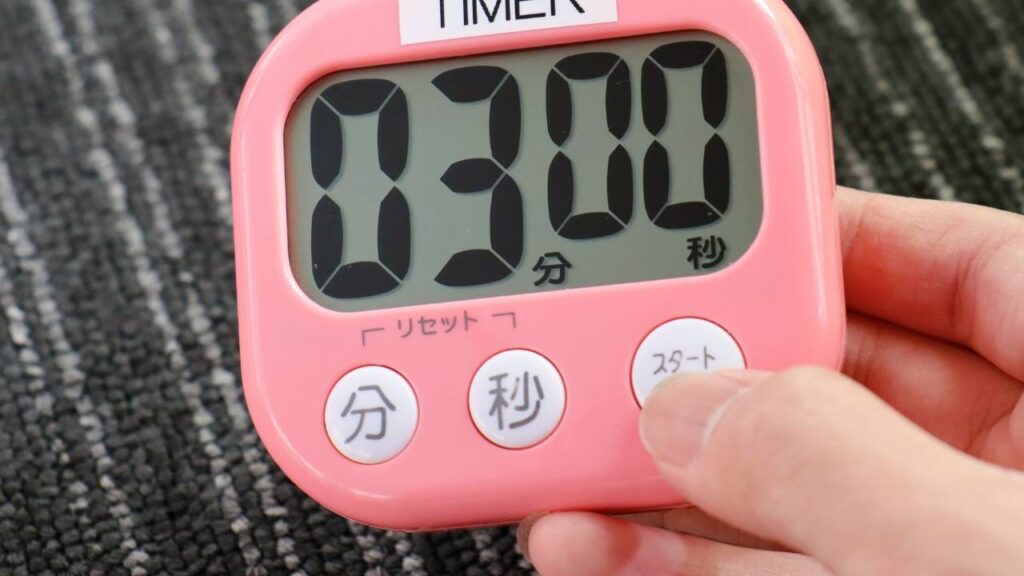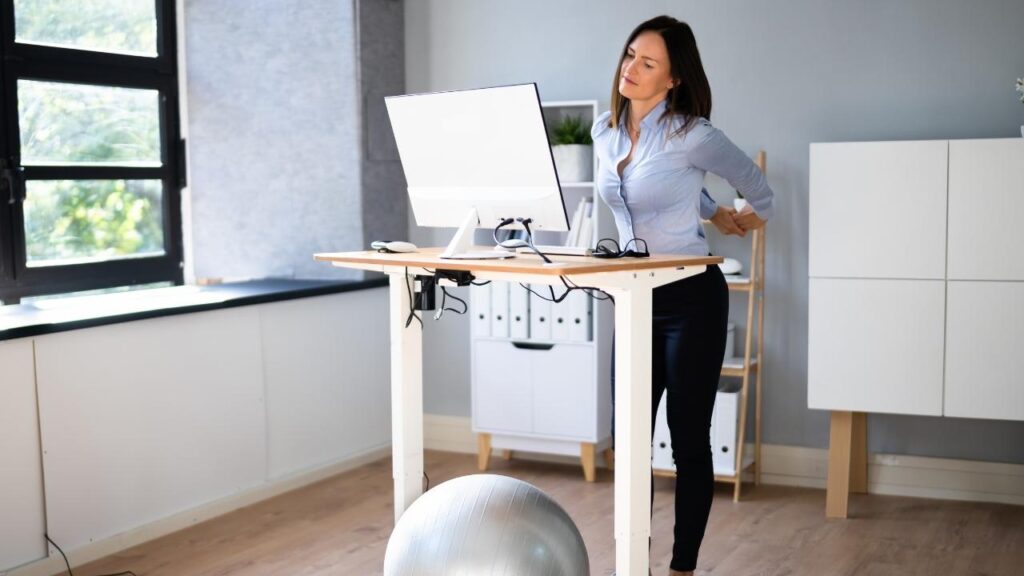(Inactive) Sedentary lifestyle is threatening your health.
Our society is always in a rush, but this fast pace can actually make us less active, spending hours sitting down at desks, staring at screens, and driving in cars.

What is sedentary lifestyle? What are the health risks?
A sedentary lifestyle refers to spending long periods of time sitting or lying down without engaging in physical activity. This lack of movement can greatly affect your health, raising the chances of developing chronic illnesses like heart disease, stroke, type 2 diabetes, and certain forms of cancer.

Risk of Heart Disease
Sitting for long periods can lead to unhealthy changes in cholesterol levels, blood pressure, and blood sugar. These changes can increase your risk of developing heart disease, the leading cause of death globally.
Heart Stroke
A sedentary lifestyle is a major risk factor for stroke, which occurs when blood flow to the brain is interrupted.
Risk of Type 2 Diabetes
Regular physical activity helps your body regulate blood sugar levels. When you’re inactive, your risk of developing type 2 diabetes increases.
Risk of Cancer
Studies have shown a link between a sedentary lifestyle and an increased risk of colon cancer, endometrial cancer, and lung cancer.
Musculoskeletal Disorders
Sitting for long periods can lead to pain and stiffness in your muscles and joints. It can also weaken your bones, increasing your risk of osteoporosis.
The World Health Organization (WHO) says a significant portion of the world’s population isn’t active enough.

For adults, that means at least 150 minutes of moderate-intensity exercise or 75 minutes of vigorous exercise each week. Think about brisk walking for 30 minutes five days a week as an example of moderate-intensity exercise. You could also do activities like cycling, swimming, or yard work. Vigorous exercise would be activities that raise your heart rate more significantly, like running, jumping rope, or interval training.
Isn’t sitting at a desk considered “work”? Doesn’t that count as being active?
Sadly, no. Sitting at a desk may involve thinking, but it doesn’t give your body the exercise it needs to be healthy. The main contrast is in the kind of movement. Desk work mainly uses small muscles and doesn’t make your heart beat faster or increase blood flow.
In contrast, proper exercise should engage larger muscle groups and make you slightly out of breath.
Table of Contents

Children and teenagers are showing a concerning trend. A recent study in The Lancet Child & Adolescent Health revealed a significant rise in screen time, averaging 8 hours daily on electronic devices. This decrease in physical activity poses a serious risk for the health of this generation.
Are you enjoying the blog? There is lot more we want to offer for FREE! Check our Popular Blogs on (Sustainable) Party, Mental Health Benefits & Personal Experience of Author.
Sustainable Tips to break inactive lifestyle.
Don’t Worry, Here are a few helpful suggestions to decrease a sedentary lifestyle that you can easily add to your daily schedule :-
Sneak Movements in your Day
Sneaking movements means fitting short bursts of activity into your day. Here are some examples :_
Walk to Short Distance Destinations

Hey, Instead of driving a mile to grab coffee, lace up your shoes and enjoy a morning walk. This small change adds steps and fresh air to your routine. Planning errands that allow you to walk between stops (like going to a few nearby stores) can maximize your walking time.
Choose Stairs instead of Lift

Always take the stairs when possible, especially for short distances within a building. You’ll build leg strength and get your heart rate up a bit. Challenge yourself to take the stairs two steps at a time for an extra push.
Park Far Away

Park further away from your destination, forcing yourself to walk a bit more. This works at the grocery store, work, or even when visiting friends.
Set a Timer To Move Physically
Set a timer on your phone to remind yourself to get up and move every 30-60 minutes. Here are some ideas to do when timer goes off :-

- Quick Stretches: Do some basic stretches like arm circles, toe touches, or lunges to loosen up tight muscles.
- Office Olympics: Organize short, fun activities with colleagues. Do jumping jacks for 30 seconds, have a plank competition, or see who can do the most wall sits.
- Walking Meetings: If appropriate, suggest walking meetings with colleagues instead of sitting in a conference room. This gets everyone moving and can even spark more creative thinking.
- The “One Minute Housework Dash”: Set a timer for one minute and do a quick burst of housework like tidying up, taking out the trash, or vacuuming. This gets your blood flowing and tackles a small chore at the same time.
Get Active Work Space
Active work space means setting up your workspace to make it easy to stand up and move around throughout the day. Here are some ideas :-
Standing Desks

Invest in a standing desk converter for your workspace at home or talk to your employer about getting one for the office. Even standing for part of the day can improve posture, burn more calories, and boost your energy levels.
Active Furniture

Consider an exercise ball chair instead of a regular office chair. This engages your core muscles while you sit, promoting better posture and balance.
Wear Fitness Trackers

Wear a fitness tracker that reminds you to move throughout the day. Many trackers have inactivity alerts that buzz after a set period of sitting, prompting you to get up and take a few steps.
I’m already pretty active, but I still use a lot of technology. Does that negate the benefits of exercise?
While physical activity is crucial, being mindful of screen time is also important. Excessive screen time can lead to sleep disturbances, reduced physical activity levels, and even mental health issues like anxiety and depression.
Turn Activities into Workouts
Hey, This is all about turning your daily activities into workout sessions.
Active Commutes

Ditch the car for your commute whenever possible. Bike to work, take a scooter, or even rollerblade if your commute allows. This is a great way to incorporate exercise into your daily routine.
Active Hobbies

Find hobbies that get you moving and that you genuinely enjoy. Take a dance class, join a hiking group, or try rock climbing. You’ll be more likely to stick with an activity you find fun.
Household chores as Exercise

Turn housework into a workout by adding some intensity. Vacuum quickly, do squats while putting things away, or lunge while mopping the floor. You’ll get your house clean and get some exercise in simultaneously.
How inactive lifestyle affect our planet?
A sedentary lifestyle doesn’t just affect personal health, but it also burdens healthcare systems with higher costs for treating long-term illnesses. Moreover, relying on motorized transportation due to a sedentary lifestyle adds to greenhouse gas emissions and air pollution, impacting the environment negatively.
The American Heart Association recently released a report emphasizing the benefits of regular exercise. According to their findings, physical inactivity results in a yearly cost of around $137 billion for the US healthcare system.
Conclusion
Here comes the conclusion part, In this blog we talked about sedentary lifestyle and the health risks associated with it, including heart disease, stroke, type 2 diabetes, certain cancers, and musculoskeletal disorders. We also highlighted different practical tips to integrate physical activity into daily routine, including sneaking short bursts of movement throughout the day, choosing active alternatives for daily errands, and setting up an active workspace.

By taking small steps and focusing on the long-term benefits, you can successfully transition to a more active and sustainable lifestyle. Remember, every bit counts!
Let’s keep the conversation going – share your thoughts and ideas in the comments below 🙂
If you have any further queries in this topic, You can Email us at contact@wecareearth.com. Thank You for being eco conscious! We warmly welcome you at wecareearth.com |
